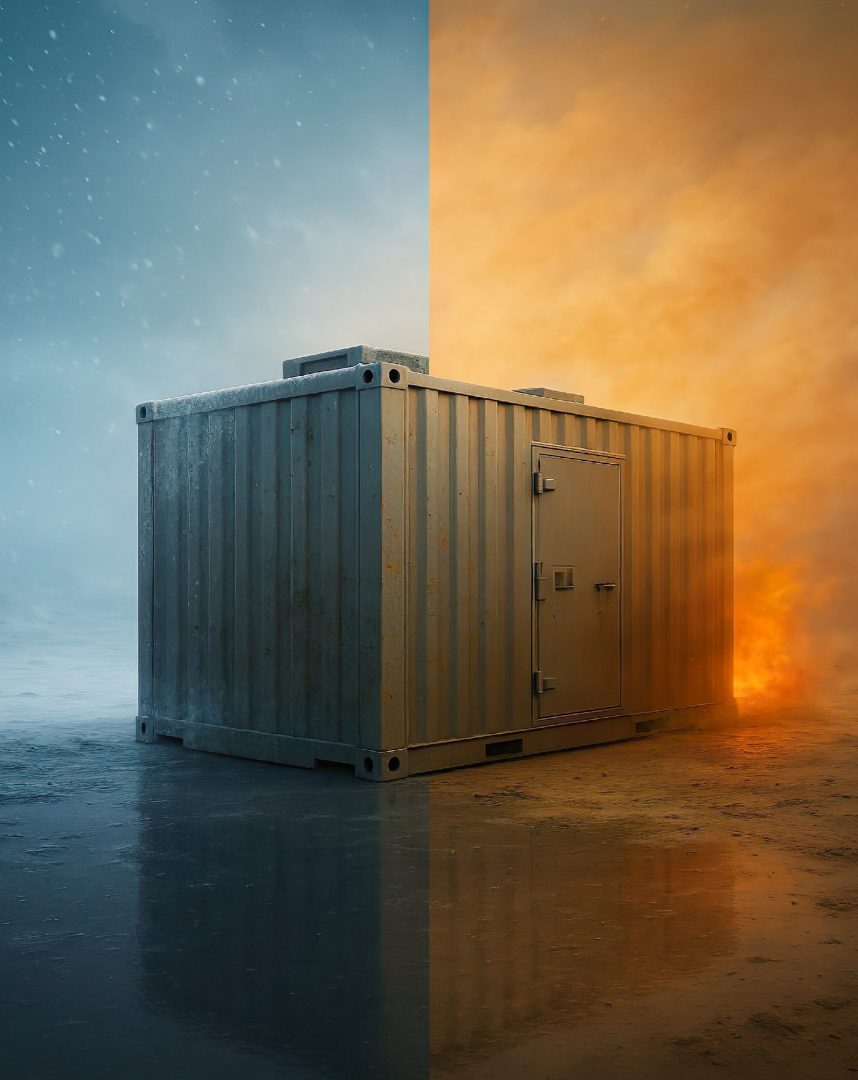4. Material Properties – Durability in Every Detail
A shelter’s durability starts at the material level. We analyze samples of structural components, coatings, and equipment to ensure their long service life and resilience.
- Corrosion Testing: Salt spray tests and cyclic corrosion tests according to international standards.
- Weathering Resistance: Verification of resistance to UV radiation, moisture, and thermal cycles.
- Material Analysis: Full identification of the chemical composition of materials (spectroscopy, chemical analysis).
- Chemical Resistance: Testing resistance to contact with substances such as decontamination agents, fuels, or lubricants.
- Physicochemical Properties: Measurements of hardness, density, and mechanical strength.
5. Systems and Energy Performance – Power Supply Reliability
We inspect the heart of the shelter – its power and life support systems. We verify that they operate efficiently and are ready for emergency situations.
- Energy Balance: Power consumption measurements in various operating modes (standby, full load).
- Backup Power Systems: Functional tests of emergency power systems (UPS, generators) during a mains failure.
- HVAC Performance: Testing the effectiveness of heating and air conditioning – measuring the time to reach set parameters and maintain stability.
6. Signature and Surface Properties
In a modern operational environment, remaining undetected is key. We examine the shelter’s surface properties in terms of its thermal and visual signature.
- Thermal Signature: Analysis of heat emissions, identification of thermal bridges and hot spots (e.g., ventilation outlets).
- Camouflage Coating Properties: Photometric measurements (light reflectance, luminance, color) to assess camouflage effectiveness.
7. Precision Metrology, Dimensional, and Mass Measurements
Dimensional and mass accuracy is critical for mobility, transport, and system integration. We perform precise measurements using advanced equipment.
- Dimensional Measurements: Determining the final product’s dimensions up to 30 meters in length.
- Component Metrology: Verification of flatness, straightness, assembly tolerances, and hole positioning.
- Precision Weighing:
- Small Components: 5 g – 35 kg.
- Platform Scales: 0.5 kg – 10,000 kg per platform, with multi-point configurations available for large objects.
8. Standards Compliance and Professional Documentation
Every test concludes with a detailed report that serves as an official confirmation of the product’s properties and its compliance with current standards.
- Compliance Assessment: Verification against the requirements of civilian (e.g., EN, ISO) and military standards.
- Accredited Procedures: Reporting in accordance with ISO/IEC 17025 where applicable.
- Full Documentation: We provide complete reports, photo/video documentation, raw measurement data, and recommendations for corrective actions.
9. Type-Approval Testing for Towing Couplings
Testing conducted in accordance with the scope of: UN Regulation No. 55 – Type-approval of mechanical coupling components of combinations of vehicles



